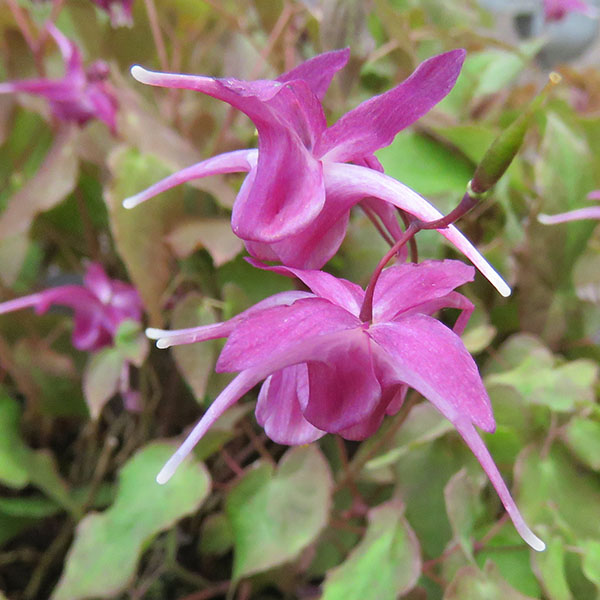
Stories from Langthorns - Epimedium
I must admit to having a bit of a ‘thing’ for Epimedium – they are great ground-cover plants, with lovely spring and autumn foliage colouring, and have the most exquisite flowers, which are like miniature columbines, or dolls size narcissi, which come in lots of shades of yellow, pink, orange, white and mauve, with varying degrees of size and of spurs – some even looking like crazy, pretty coloured spiders hanging in mid-air.
All Epimedium like moist, cool, shady and well drained conditions as they come from mountainous woodlands and although the full name of Epimedium x perralchicum Frohnleiten is a bit of a mouthful it is one of my favourites and one of the toughest of the European varieties, being drought tolerant and evergreen with good seasonal foliage colour and bright yellow flowers (interestingly many Epimedium that tolerate dry shade have yellow flowers). In the early spring but after the last frost I generally cut all the old foliage off (which by now has become quite leathery and tired looking) before the flowers appear on thin, wiry stems, otherwise they could easily be missed under the old growth. When the new leaves come through they are soft and heart shaped, a bronze-red colour with green veining, perfect to set off other small spring delights, and, along with the flowers, are always in my bouquet for the Easter breakfast table.
Another lovely species is Epimedium grandiflorum which is deciduous, clump-forming, and prefers a slightly more acid soil. These plants originated from Japan where they were discovered in the early nineteenth century by the infamous Philipp Franz von Siebold, a physician with the Dutch East India Company (who also gave us the Hosta and Japanese knotweed). Since then many have been crossed and selected for differing colour forms.
In the late twentieth century plant hunters (such as Roy Lancaster) discovered new species in China, which are now also being hybridised and ‘improved’ with wonderfully exotic leaves and strange other-worldly flowers, which are all set to take the gardening world by storm. Meantime there are lots of the old varieties still very sought after, such as another favourite, the cheerful Epimedium x warleyense Ellen Willmott, with soft orange and yellow flowers, which was named after the great plant enthusiast from Warley Place, Brentwood. But whatever the choice, Epimedium make perfect ground-cover shade-loving plants, whether grown en-masse or as an exciting collection, they have year-long appeal.
